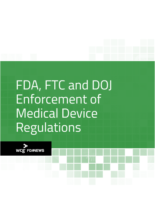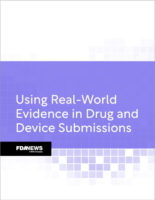
Home » FDA: Prepare for Complications When Establishing UDI Systems
FDA: Prepare for Complications When Establishing UDI Systems
June 13, 2014
BALTIMORE — Devicemakers in the process of setting unique device identification codes with the FDA may want to bake in some extra time, agency officials say.
FDA staff charged with implementing the rule suggest not publishing codes through the UDI system until the device’s manufacturing date is solid. That allows extra time for trouble- shooting and making last-minute modifications.
A UDI code that is live in the system cannot be edited, said vocabulary and standards lead Leslie Tompkins, noting that even minor adjustments may require establishing a completely new UDI. And the seven-day “grace period” allows for only a few minor changes, she added. Tompkins spoke at the three-day UDI Conference 2014.
One mandatory UDI data element is the Global Medical Device Nomenclature, governed by the UK-based GMDN Agency. The vocabulary used by GMDN is shaped by the group’s membership and considered to be the only established vocabulary large enough to describe all existing device types, Tompkins said. The breadth of the generic GMDN codes varies by device type, with some terms having more subcategories than others.
The codes make device comparison shopping for patients and caregivers far easier, Tompkins said. The FDA’s text-based UDI search database will allow the public to compare features, sizes and recall notifications on a generic type of device, rather than on a specific branded product.
Manufacturers that don’t yet have assigned terms need to work with GMDN to select appropriate terms for their device, Tompkins told conference-goers. “If no appropriate terms exist, you may need to build new ones,” she said.
Tompkins cautioned that companies with established GMDN terms are not automatically in the clear, because the FDA has decided not to accept terms that have been retired by GMDN. “We understand it’s a burden but, on our side, why should we populate a database with data we know is bad?” she asked. “This is the best step for data quality moving forward.”
While the GMDN Agency alerts members when it retires a term they are using, nonmember companies are responsible for checking periodically to ensure that they’re still using accepted terms, Tompkins said.
None of this is free, and some conference-goers expressed concern about potential costs for small manufacturers.
According to Tompkins, the GMDN Agency charges on a sliding scale based on company size. Charges, which include a set number of device codes, range from $270 to join and $135 each year thereafter for manufacturers with less than $683,000 in yearly sales to about $5,500 and $4,100, respectively, for companies with more than $136 million in sales. Fees for companies with annual revenues greater than $1.3 billion are individually negotiated.
ESG Submissions
Extra time also may be crucial when testing UDI data submissions, said Indira Konduri, program manager of the Global UDI Database. Before initiating tests, manufacturers or parties submitting on their behalf must send a paper letter to the FDA to get what’s known as a “letter of nonrepudiation.” Once the letter of nonrepudiation is received, the company will name users allowed to upload the data. Manufacturers who have Electronic Submissions Gateway accounts for adverse event reporting or other functions can continue to use that account for UDI submissions, Konduri noted.
Some further delays could occur if manufacturers fail to properly mark UDI files as being intended for CDRH, causing data uploaded to the agencywide ESG to go to the wrong center.
Manufacturers uploading to ESG will get an acknowledgement email for each level of the process, Konduri said. The emails will confirm that ESG accepted the file, that it went to CDRH and that it has been processed by GUDID.
It’s not until the final level that any analysis of data quality is performed, Konduri explained. At that time, submitters will get a message telling them whether the data input has passed or failed. In the case of failure, errors will be enumerated, she said.
The UDI final rule, issued in September 2013, mandates that manufacturers imprint a two-part code on a device’s packaging or, in some cases, the device itself. The device identifier lists the specific version or model of the device, while the production identifier more precisely identifies the specific device through information like lot/batch, serial number and expiration date. The requirement is being phased in across several years, beginning with Class III devices in September.
Beginning on Sept. 24, 2014, a UDI must be added to Class III medical devices distributed in the US. Make sure you’re prepared; purchase The FDAnews UDI Compliance Kit today!
Upcoming Events
-
21Oct
